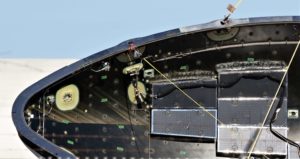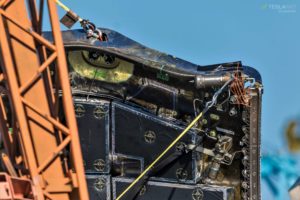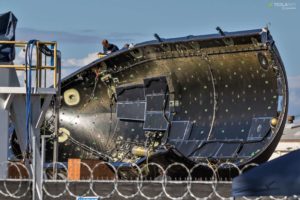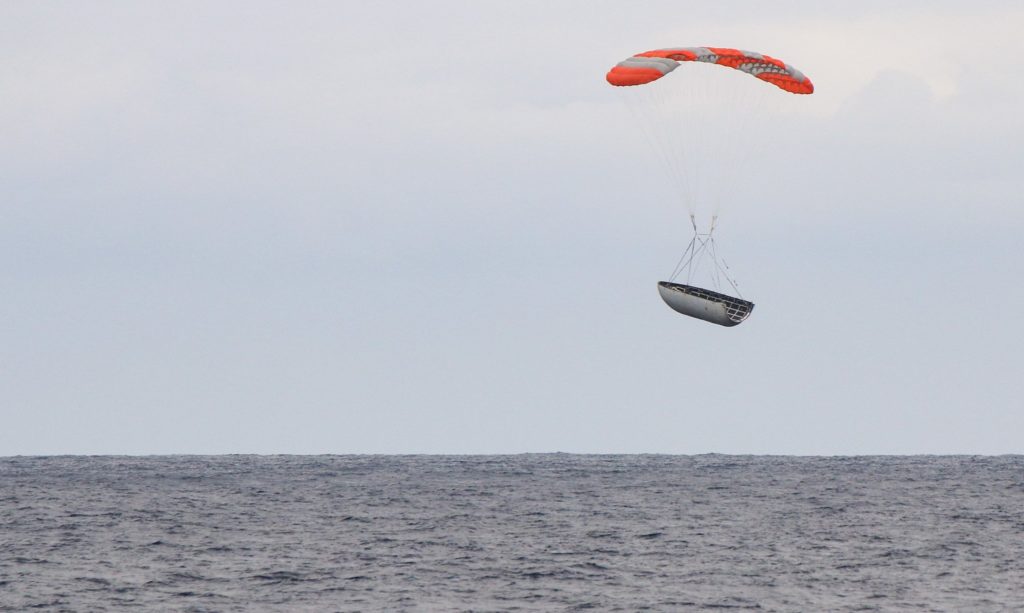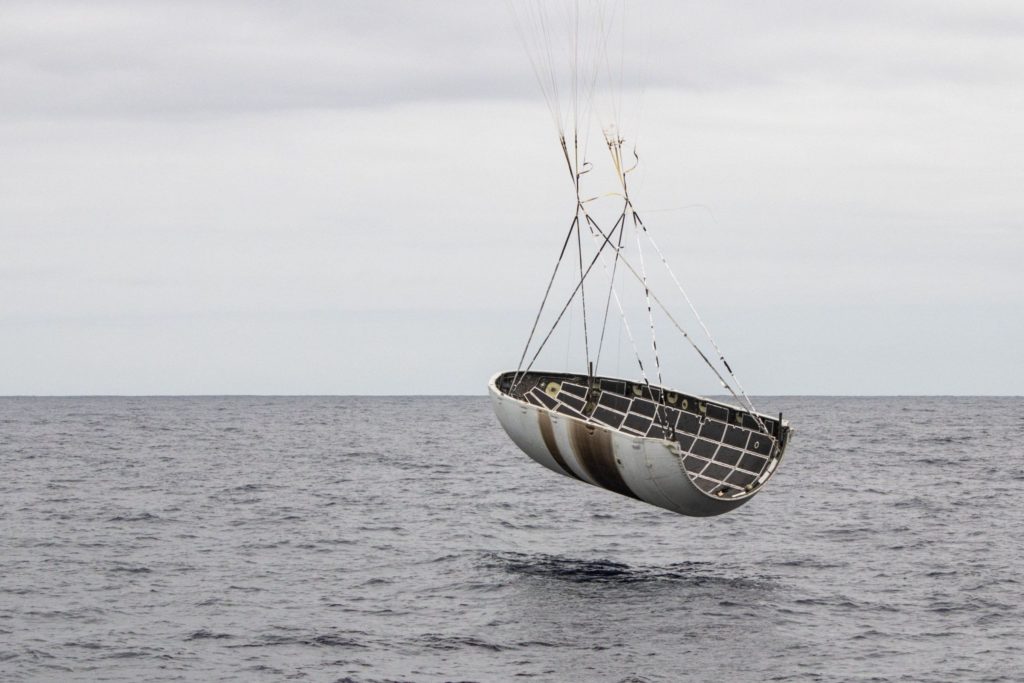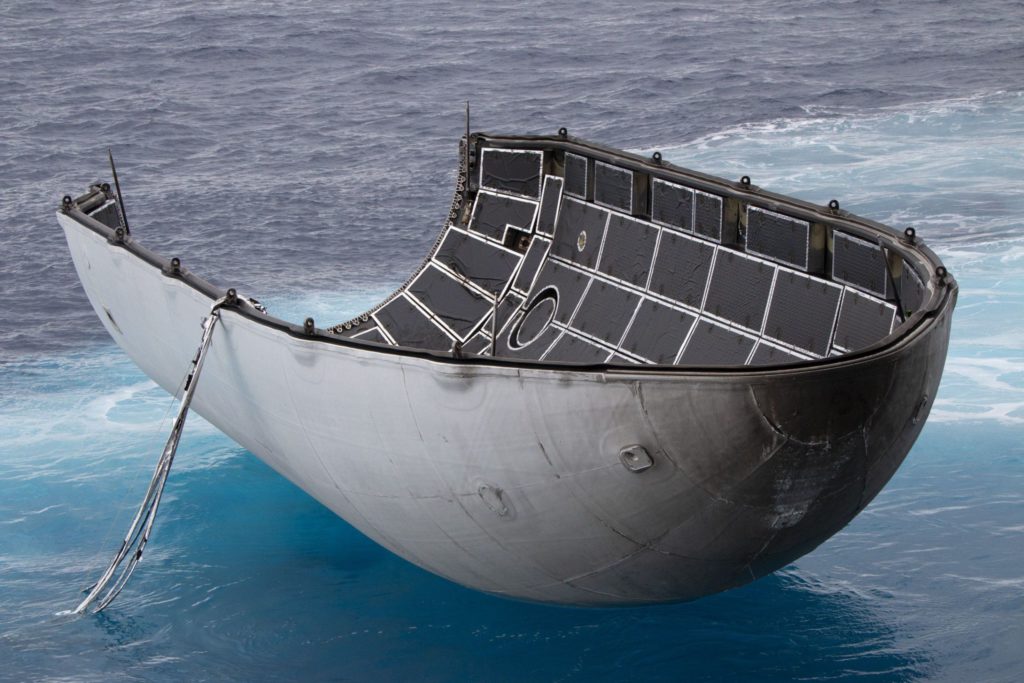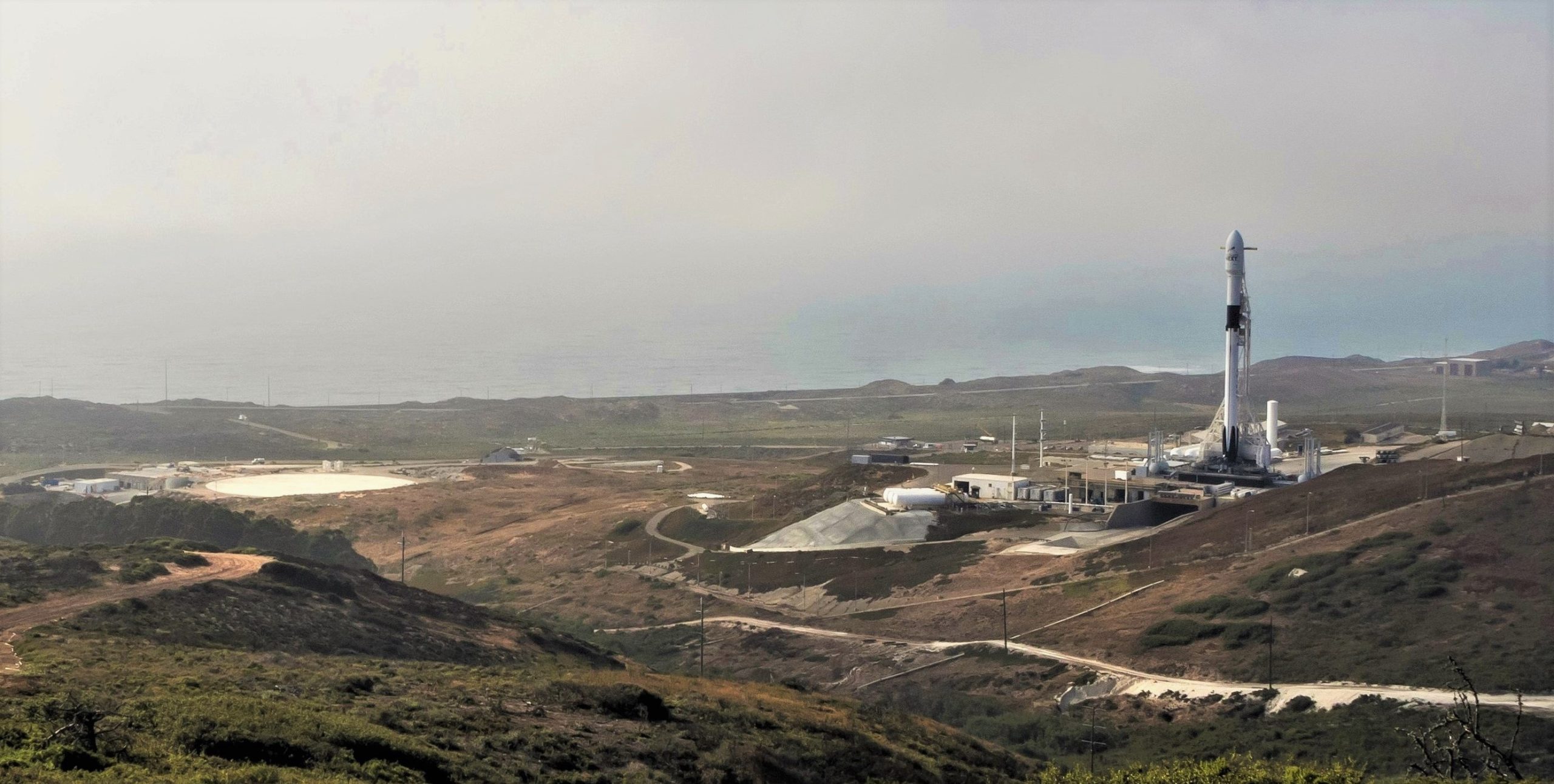
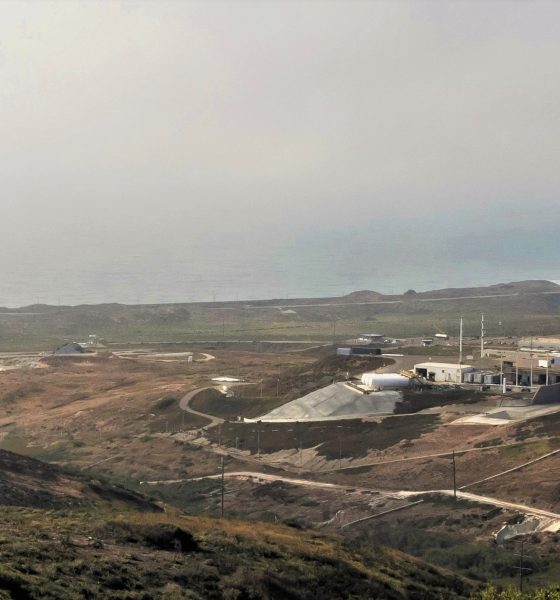
SpaceX
SpaceX’s Falcon 9 Block 5 ready for first Return-To-Launch-Site booster landing
Falcon 9 B1048.2 is vertical at SpaceX’s Vandenberg Space Launch Complex 4 (SLC-4) facilities ahead of the rocket’s second launch, targeted at 07:21 PM PDT, Oct. 7 (02:21 UTC, Oct. 8). A bit less than ten minutes after liftoff, B1048 will attempt a Return-To-Launch-Site (RTLS) landing just ~1400 feet from the launch pad.
Meanwhile, Mr. Steven is ready to depart Port of San Pedro in support of Falcon fairing recovery operations soon after liftoff, the vessel’s fifth attempted catch in ~12 months of active service with SpaceX.
Falcon 9 B1048 and SAOCOM-1A as of 10:50 PM PDT. Photo courtesy of @_TomCross_ ?? pic.twitter.com/vlaB1fkk5p
— Eric Ralph (@13ericralph31) October 7, 2018
A few hours after the vessel’s four arms and net were fully installed (the first time in more than six weeks), SpaceX technicians performed a series of last-minute tests with a Falcon fairing half placed on his net to verify that its mechanised rigging was working as intended, while also double-checking data connectivity between the fairing and its target (the net). Pre-launch checkouts largely completed, Mr. Steven now has to travel a short 200 miles to reach the region where SpaceX expects Falcon 9’s fairings to be recovered.
- On September 4th, SpaceX performed a mechanical test of a fairing’s separation mechanism, in this case used to hold a (detachable) lifting harness. (Pauline Acalin)
- Note the taut, yellow ropes connected to the fairing at its original serparation connector ports. (Pauline Acalin)
- After an audible “3..2..1”, a sharp noise much like compressed gas being released was followed by a clang as the harness dropped. (Pauline Acalin)
Of Falcons and fairings
It may feel quite different watching in real time, but SpaceX has made a huge amount of progress towards successful and routine fairing recoveries over the course of the last year and a half. Before the company became truly famous (and popular), more than two years (2013-2015) and a dozen distinct attempts were spent patiently learning how to recover Falcon 9 boosters, ranging from the first launch of Falcon 9 V1.1 (CASSIOPE, late 2013) to multiple instances where boosters exploded in spectacular fashions on drone ships Just Read The Instructions and Of Course I Still Love You after SpaceX began true landing attempts.
In fact, the first intact recovery didn’t even take place on a drone ship after years of extensive testing at sea – in December 2015, after separating from its Orbcomm-2 satellite constellation payload, Falcon 9 B1019 became the first booster recovered by SpaceX in one piece, landing almost flawlessly at the company’s just-finished Cape Canaveral landing zone, known as LZ-1. Several months later, SpaceX successfully recovered its first Falcon 9 at sea, landing a booster on OCISLY shortly after launching the CRS-8 Cargo Dragon mission, although several more failures or near-failures followed as recovery technicians and engineers worked through a diverse and unpredictable series of challenges as they arose.
Rocket recovery: it’s not easy
Even in 2018, SpaceX unintentionally expended Falcon Heavy’s center core, demonstrating that even three dozen successful Falcon 9 and Heavy booster recoveries are not necessarily enough to shine light on or predict all possible modes of failure. Around 7:21 PM (PDT) today, barring a scrubbed launch attempt, the already-flown Falcon 9 booster B1048 – refurbished from landing to launch in just ~74 days – will likely launch and land once more, and most of the world wont even blink and eye. In the eyes of those that don’t or haven’t followed SpaceX obsessively, rocket booster recovery and reuse is to some extent already perceived as routine, logical, and inevitable less than three years after the technology’s first true Kitty Hawk moment.
- One half of SpaceX’s Iridium-6/GRACE-FO just moments before touchdown on the Pacific Ocean. (SpaceX)
- Close. (SpaceX)
- Hans Koenigsmann was extremely excited about the condition of this particular fairing half, and included this photo in his IAC 2018 keynote. (SpaceX)
The point of this brief SpaceX history lesson is to emphasize that fairing recovery is an extremely young technology, even for SpaceX. Before Mr. Steven swooped into existence, SpaceX had begun attempting to softly land payload fairings in the ocean around the start of 2017, and Mr. Steven famously returned to Port of San Pedro with an intact (but unreusable) fairing half in March 2018 after successfully launching Earth-imaging satellite PAZ. Comparing historical apples to present-day oranges, it may be safe to assume that fairing recovery’s Orbcomm-2 moment – Mr. Steven’s first successful catch – is already on the horizon.
In the meantime, it never hurts to remind oneself that – vicarious frustrations aside – observers are likely watching history unfold in real-time once again. SpaceX’s SAOCOM-1A launch webcast will begin around 7PM PDT – 15 or 20 minutes prior to launch – and can be found at the link below.
For prompt updates, on-the-ground perspectives, and unique glimpses of SpaceX’s rocket recovery fleet check out our brand new LaunchPad and LandingZone newsletters!

Elon Musk
Elon Musk’s Biggest Revelations on AI, Robots, and the Future of Work from the Moonshots Podcast

Elon Musk’s appearance on the Moonshots with Peter Diamandis podcast was packed with bold predictions, candid admissions, and surprising tech insights. The nearly three-hour conversation covered everything from artificial intelligence to humanoid robots, geopolitics, and the future of work. Here are the top 10 most intriguing takeaways:
-
Aggressive AGI Timeline Predictions
Musk offered a detailed view on when artificial general intelligence (AGI) could emerge, suggesting it may arrive sooner than many expect, emphasizing both transformative potential and risks.
-
U.S. vs. China in the AI Race
He discussed the strategic competition between the United States and China over AI development, noting that geopolitical dynamics will shape how and who leads in the next decades.
-
Future of Job Markets
Musk touched on how AI and automation could reshape employment, predicting massive boosts in productivity alongside potential disruptions in traditional work structures.
-
Clean Energy Transition
A recurring theme was the role of clean energy in future economies, with Musk reiterating the importance of scaling sustainable power generation and storage.
-
Humanoid Robots Are Coming
On the podcast, Musk elaborated on Tesla’s work on humanoid robots, hinting at timelines and applications that go beyond factories to general-purpose assistance.
-
Tesla Roadster “Last Human-Driven Car”
Outside the core discussion topics, Musk teased features of the upcoming Tesla Roadster — calling it “the best of the last of the human-driven cars” and suggesting safety won’t be its main selling point.
-
The Role of AI in Clean Energy and Robotics
Linking AI to both energy optimization and robotics, Musk explained how smarter systems could accelerate decarbonization and task automation across industries.
-
U.S. Innovation Leadership
Musk argued that maintaining American leadership in key tech sectors like AI, space, and robotics should be a national priority, with thoughtful policy and investment.
-
Job Creation vs. Job Elimination
While acknowledging automation’s disruptive effects, he also outlined scenarios where new industries and opportunities could emerge, particularly in AI, space, and advanced manufacturing.
-
Long-Term Vision for Humanity
Throughout the conversation, Musk revisited his long-term philosophical views — including a belief in humanity’s responsibility to become a multi-planetary and technologically empowered species.
Whether you agree with Musk’s optimism or not, the podcast offers a window into the thinking of one of the most influential figures in tech today, in and why his visions continue to spark debate and inspiration.
Elon Musk
Starlink achieves major milestones in 2025 progress report
Starlink wrapped up 2025 with impressive growth, adding more than 4.6 million new active customers and expanding service to 35 additional countries, territories, and markets.

Starlink wrapped up 2025 with impressive growth, adding more than 4.6 million new active customers and expanding service to 35 additional countries, territories, and markets. The company also completed deployment of its first-generation Direct to Cell constellation, launching over 650 satellites in just 18 months to enable cellular connectivity.
SpaceX highlighted Starlink’s impressive 2025 progress in an extensive report.
Key achievements from Starlink’s 2025 Progress
Starlink connected over 4.6 million new customers with high-speed internet while bringing service to 35 more regions worldwide in 2025. Starlink is now connecting 9.2 million people worldwide. The service achieved this just weeks after hitting its 8 million customer milestone.
Starlink is now available in 155 markets, including areas that are unreachable by traditional ISPs. As per SpaceX, Starlink has also provided over 21 million airline passengers and 20 million cruise passengers with reliable high-speed internet connectivity during their travels.
Starlink Direct to Cell
Starlink’s Direct to Cell constellation, more than 650 satellites strong, has already connected over 12 million people at least once, marking a breakthrough in global mobile coverage.
Starlink Direct to Cell is currently rolled out to 22 countries and 6 continents, with over 6 million monthly customers. Starlink Direct to Cell also has 27 MNO partners to date.
“This year, SpaceX completed deployment of the first generation of the Starlink Direct to Cell constellation, with more than 650 satellites launched to low-Earth orbit in just 18 months. Starlink Direct to Cell has connected more than 12 million people, and counting, at least once, providing life-saving connectivity when people need it most,” SpaceX wrote.
Elon Musk
Starlink passes 9 million active customers just weeks after hitting 8 million
The milestone highlights the accelerating growth of Starlink, which has now been adding over 20,000 new users per day.

SpaceX’s Starlink satellite internet service has continued its rapid global expansion, surpassing 9 million active customers just weeks after crossing the 8 million mark.
The milestone highlights the accelerating growth of Starlink, which has now been adding over 20,000 new users per day.
9 million customers
In a post on X, SpaceX stated that Starlink now serves over 9 million active users across 155 countries, territories, and markets. The company reached 8 million customers in early November, meaning it added roughly 1 million subscribers in under seven weeks, or about 21,275 new users on average per day.
“Starlink is connecting more than 9M active customers with high-speed internet across 155 countries, territories, and many other markets,” Starlink wrote in a post on its official X account. SpaceX President Gwynne Shotwell also celebrated the milestone on X. “A huge thank you to all of our customers and congrats to the Starlink team for such an incredible product,” she wrote.
That growth rate reflects both rising demand for broadband in underserved regions and Starlink’s expanding satellite constellation, which now includes more than 9,000 low-Earth-orbit satellites designed to deliver high-speed, low-latency internet worldwide.
Starlink’s momentum
Starlink’s momentum has been building up. SpaceX reported 4.6 million Starlink customers in December 2024, followed by 7 million by August 2025, and 8 million customers in November. Independent data also suggests Starlink usage is rising sharply, with Cloudflare reporting that global web traffic from Starlink users more than doubled in 2025, as noted in an Insider report.
Starlink’s momentum is increasingly tied to SpaceX’s broader financial outlook. Elon Musk has said the satellite network is “by far” the company’s largest revenue driver, and reports suggest SpaceX may be positioning itself for an initial public offering as soon as next year, with valuations estimated as high as $1.5 trillion. Musk has also suggested in the past that Starlink could have its own IPO in the future.
